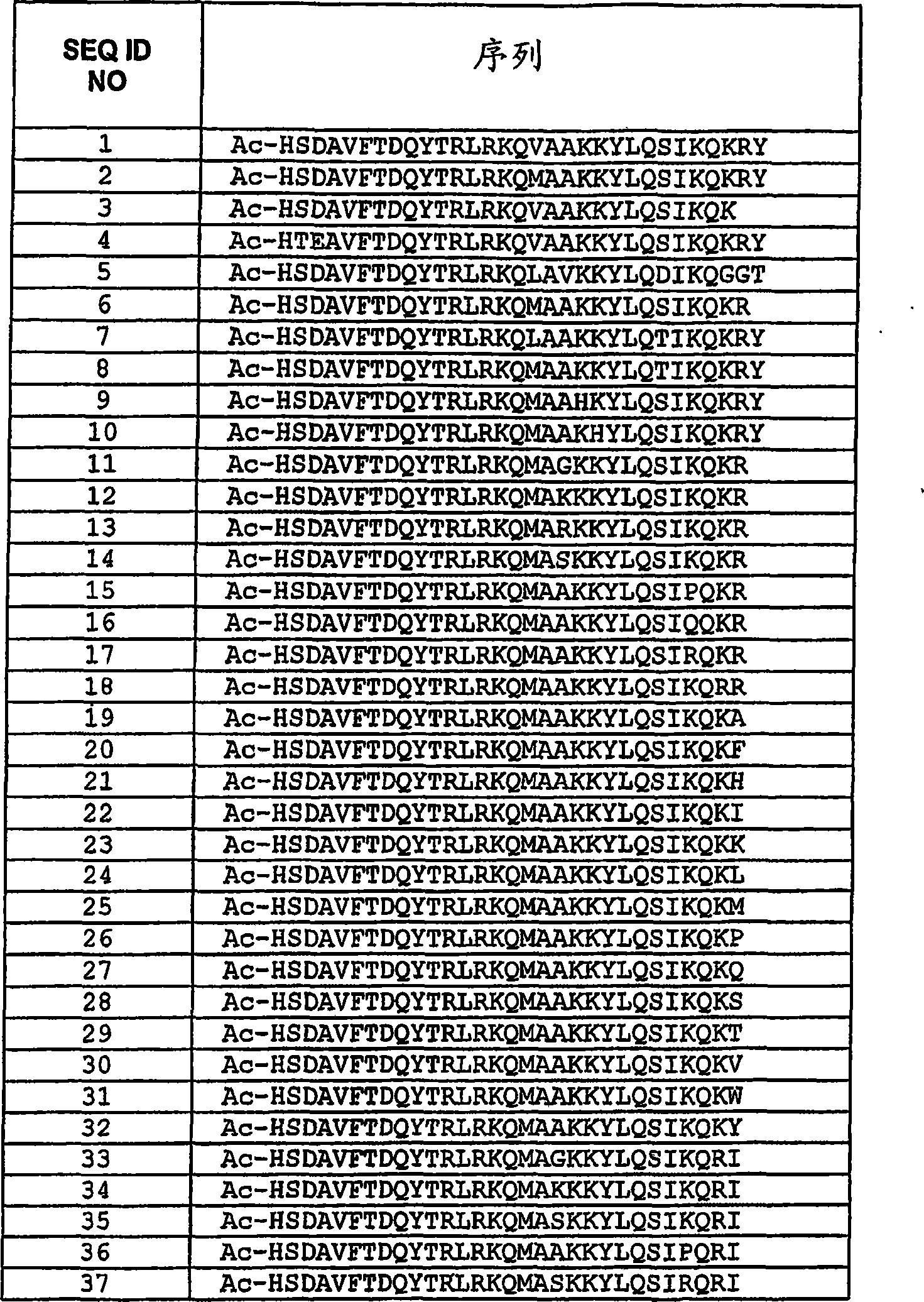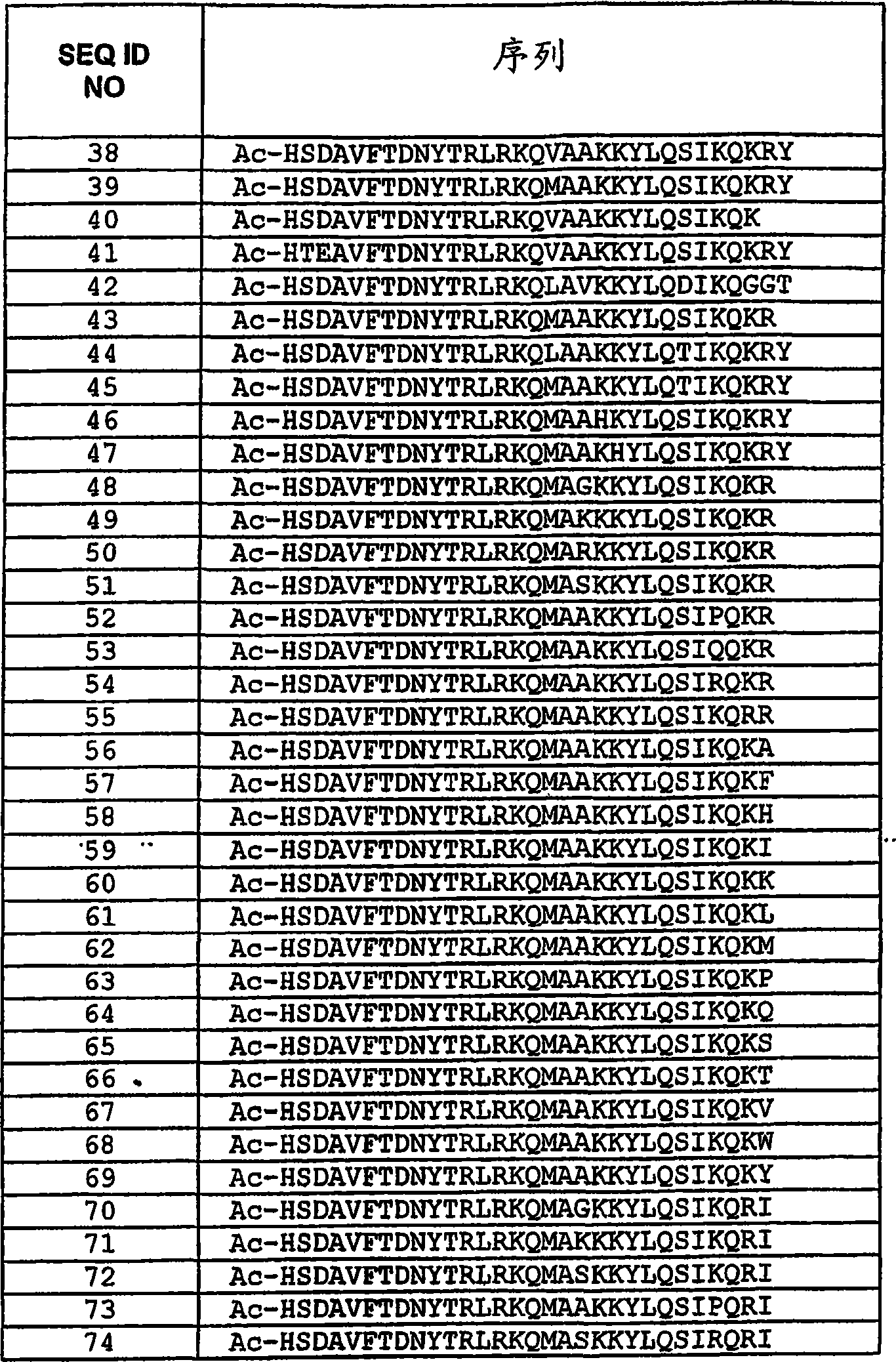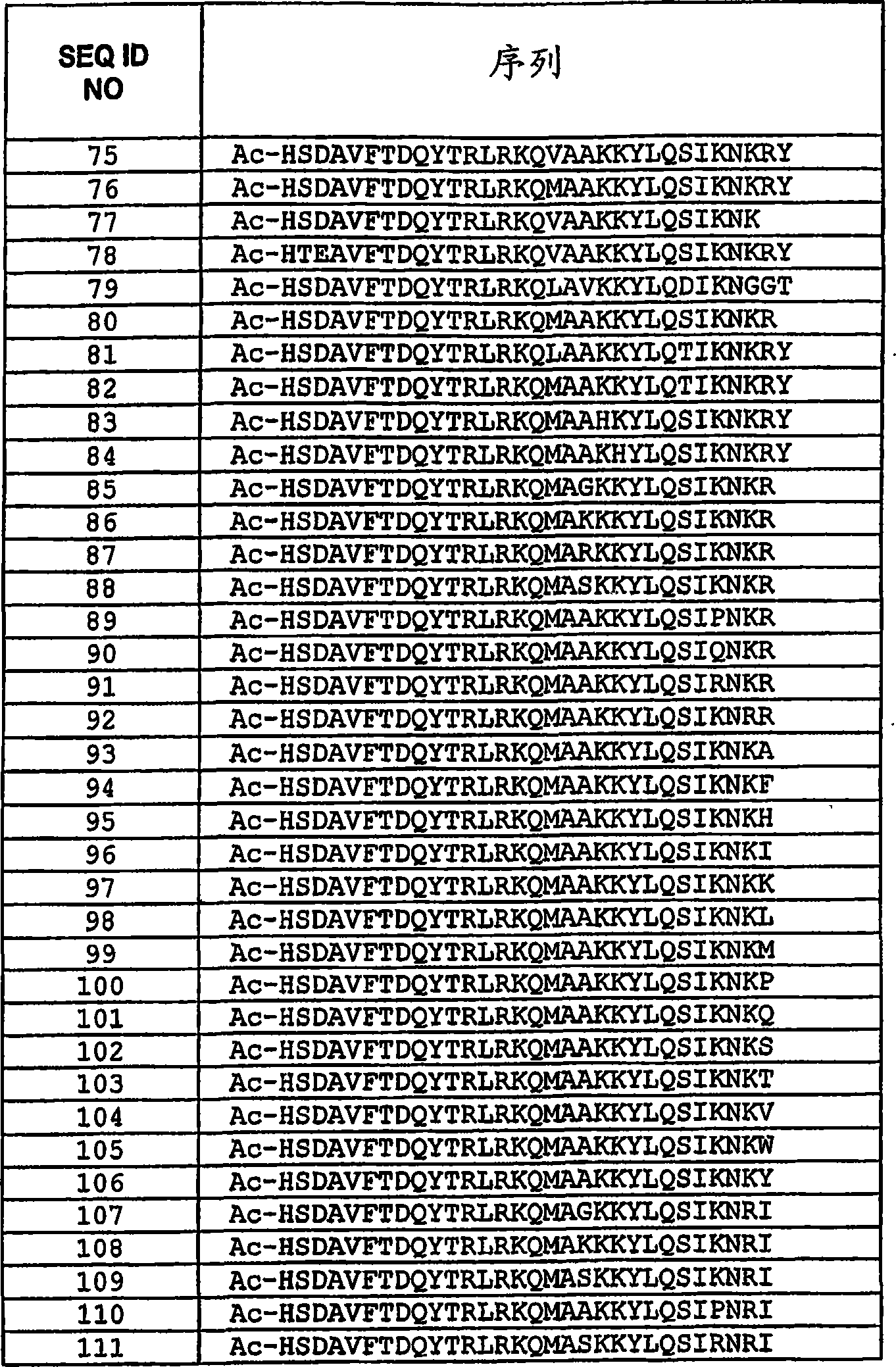Pituitary adenylate cyclase activating peptide (PACP) receptor (VPAC2) agonists and their pharmacological methods of use
An antibody and drug technology, applied in the field of pituitary adenylate cyclase-activating peptide (PACAP) receptor (VPAC2) agonist and its pharmacological application, can solve problems such as lowering blood sugar
- Summary
- Abstract
- Description
- Claims
- Application Information
AI Technical Summary
Problems solved by technology
Method used
Image
Examples
Embodiment 1
[0136] Example 1. Peptide Synthesis Method
[0137] [129] Some polypeptides of the present invention were synthesized according to the following general procedure:
[0138]Peptide synthesis was performed under continuous flow conditions using Rapp-Polymere PEG-polystyrene resin (Rapp-Polymere, Tubingen, Germany) by the FMOC / tert-butyl method (Pennington & Dunn, Peptide Synthesis Protocols, Volume 35, 1994). When the synthesis is complete, the peptide is cleaved from the resin and analyzed with TFA / DTT / H 2 O / triisopropylsilane (88 / 5 / 5 / 2) deprotection. Precipitate the peptides from the cleavage mixture with cold diethyl ether. The precipitate was washed three times with cold ether, then dissolved in 5% acetic acid and lyophilized. Peptides were checked by reverse phase chromatography on a YMC-Pack ODS-AQ column (YMC, Inc., Wilmington, NC) on a Waters ALLIANCE(R) system (Waters Corporation, Milord, MA) using water / acetonitrile with 3% TFA As an acetonitrile gradient from 0%-...
Embodiment 2
[0139] Example 2. Peptide Acetylation
[0140] [130] Peptides were synthesized by standard methods well known in the art. Peptides were synthesized with an Applied Biosystems 430A peptide synthesizer using FMOC chemistry with HBTU activation on Rink amide resin and N-terminal acetylation with acetic anhydride. Peptides were cleaved with 84.6% TFA, 4.4% phenol, 4.4% water, 4.4% thioanisole, and 2.2% ethanedithiol. Peptides were precipitated from the cleavage mixture with cold tert-butyl methyl ether. The precipitate was washed with cold ether and dried under argon. The peptide was purified by reverse phase C18 chromatography with a linear water / acetonitrile fraction with 0.1% TFA. Peptide identity was confirmed by MALDI and electrospray mass spectrometry and amino acid analysis.
Embodiment 3
[0141] Example 3. Peptide PEGylation
[0142] [131] By attaching a polyethylene glycol (PEG) moiety to the peptide can reduce renal clearance of the peptide and reduce protease degradation of the peptide, thereby increasing the in vivo half-life of the peptide. The use of VPAC2 receptor agonist peptides is severely limited by their very short in vivo half-life; however, attachment of a PEG moiety (pegylation) extends the half-life of the peptide sufficiently to allow daily to weekly therapy.
[0143] [132] Pegylation can be performed by any method known to those skilled in the art. In this example, however, PEGylation was performed by introducing a unique cysteine mutation into the peptide, followed by the peptide's sulfhydryl group and the methoxy-PEG-maleimide reagent (Nektar (Inhale / Shearwater), San Carlos, CA; NOF, Tokyo, Japan) PEGylate cysteines with stable thioether linkages between the maleimide groups. A unique cysteine can be introduced at the C-terminus of th...
PUM
 Login to View More
Login to View More Abstract
Description
Claims
Application Information
 Login to View More
Login to View More - R&D
- Intellectual Property
- Life Sciences
- Materials
- Tech Scout
- Unparalleled Data Quality
- Higher Quality Content
- 60% Fewer Hallucinations
Browse by: Latest US Patents, China's latest patents, Technical Efficacy Thesaurus, Application Domain, Technology Topic, Popular Technical Reports.
© 2025 PatSnap. All rights reserved.Legal|Privacy policy|Modern Slavery Act Transparency Statement|Sitemap|About US| Contact US: help@patsnap.com



